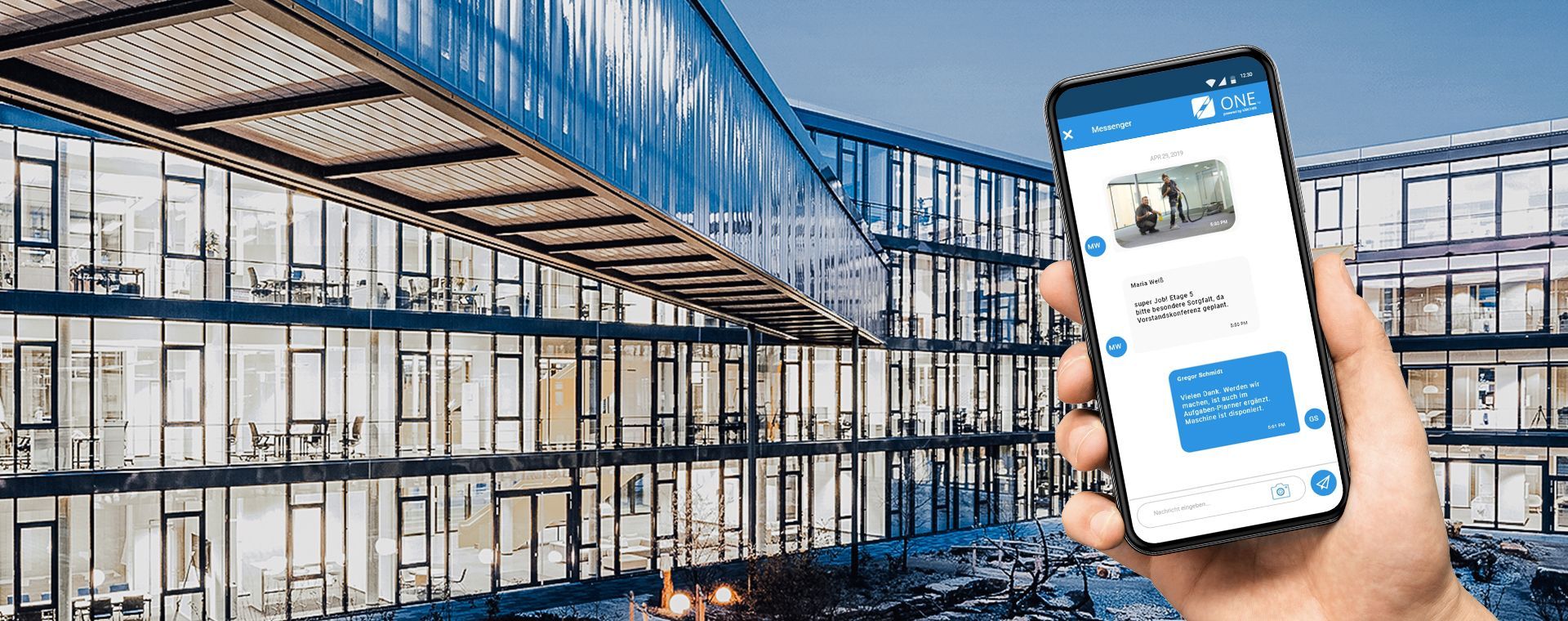soniq
PLATFORM ARCHITECTURE ON AWS CLOUD
INDUSTRY
Other
CLOUD PROVIDER
Amazon Web Services

With the [SQ] One platform, soniq offers outstanding digital solutions for comprehensive process management at multiple locations using innovative technologies. Through cloud-based big data analysis, [SQ] One optimizes the entire value chain of companies specializing in cleaning services. soniq is at the forefront of digital development, underpinned by the use of big data analytics, IoT infrastructure, and a custom app for cleaners. All of this was made possible by transforming the existing cloud infrastructure using AWS and Zoi and incorporating design patterns, best practices, and in particular the AWS Well-Architected Framework.
This is a paragraph. Writing in paragraphs lets visitors find what they are looking for quickly and easily.
This is a paragraph. Writing in paragraphs lets visitors find what they are looking for quickly and easily.
This is a paragraph. Writing in paragraphs lets visitors find what they are looking for quickly and easily.
This is a paragraph. Writing in paragraphs lets visitors find what they are looking for quickly and easily.
COST SAVINGS
by more than 10% using the AWS Well-Architected Framework
AUTOMATION
helps to reduce manual tasks by more than 50% for DevOps teams
SECURITY
Potential infrastructure vulnerabilities detected and fixed
OPTIMIZING OLD CLOUD STRUCTURES COST-EFFICIENTLY WITH AWS
In this context, Zoi took on the challenge of restructuring the cloud backend in collaboration with soniq and thus transforming the infrastructure. The declared goal was to ensure a more efficient and effective use of the entire backend infrastructure so that the digital service offering through [SQ] One can be provided to the end customers better, faster, and more cost-effectively in operation.
The transformation project began with a comprehensive analysis of the baseline infrastructure at soniq. In joint interviews and coordination rounds, not only were potential pain points identified but reviews of the entire cloud infrastructure were also carried out. In the course of this, faulty structures, capacity bottlenecks, and operational inadequacies were quickly identified that could be traced back to the general structure of the backend. The analysis also covered the software used and the service architecture in the cloud. Particular attention was paid to the cloud native services of the various provider platforms in use.
Based on the results of the analysis, the next step was a requirements engineering process based on a target image. This process guaranteed a uniform procedure for defining the cloud target landscape in the course of the targeted transformation. In addition, the procedure enabled all stakeholders, sponsors, and responsible parties at soniq to participate in the transformation process within a consolidated target image and to take into account individual requirements and sensitivities regarding the target image.
The subsequent solution architecture fully represents the agile and coordinated approach as well as the use of innovative services and design patterns in the AWS environment. By using cloud native services that are cost-effective in both operation and scaling, the cloud infrastructure was optimally aligned with soniq's requirements. By reducing complexity (e.g. dispensing with IaaS by using SaaS / PaaS, and by focusing on a target architecture in AWS), it was possible to massively simplify manageability, operation, and, in particular, maintenance of the backend. Without exception, all of this aligns with the excellent service offering in the digital context at soniq.
FROM IAAS TO CLOUD NATIVE SERVICES
As part of the development, provisioning, and handover of the transformed cloud backend, massive reliance was placed on service offerings in AWS. In particular, the replacement of IaaS structures with cloud native services (PaaS / SaaS) was quantifiable within a very short time: The costs for the overall operation of the cloud platform in AWS could be reduced by a factor of about 10. This is mainly due to the fact that the infrastructure can henceforth be scaled according to demand or load – and thus does without the operation of redundant services and infrastructure components. Due to this, the use of self-operated services was reduced by 50 %, which leads to a reduction in the workload of operations in general and of the DevOps teams in particular. This frees up resources within the company, and the focus can be placed entirely on the new and further development of applications.
The service portfolio at AWS contributes significantly to the success of the transformation. The following services at AWS, among others, form the cornerstone of the newly created cloud backend:
- AWS Simple Storage Service (S3): The object storage S3 scales independently without manual intervention and ensures global access.
- Elastic Kubernetes Services (EKS): EKS provides a managed Kubernetes service that is integrated within the cloud infrastructure at AWS and automatically scales with load changes.
- Amazon Route 53: The Route 53 DNS service is a highly available and scalable web application in AWS that provides both fast and easy routing to Internet applications.
- AWS CloudFront: The CloudFront content delivery network (CDN) guarantees fast data transfer including encryption, the use of HTTPS, and compatibility with many other AWS services.
- Amazon Elasticsearch Service: With this service, it is possible to build and operate ELK stacks (Elasticsearch, Logstash, Kibana) on a usage basis and without additional costs.
- Amazon RDS PostgreSQL: This AWS service allows immediate setup, operation, and scaling of PostgreSQL in the cloud without additional maintenance effort in the form of updates, storage management, etc.
The 5 pillars of the AWS Well-Architected Framework.

Another important success factor within the transformation project was the use of the Well-Architected Framework in AWS. The framework offers design principles and best practices for building cloud architectures in AWS that help achieve sustainability, scalability, and especially policy compliance while incorporating corporate governance requirements. All these aspects are addressed within the framework through exposed core areas, which are represented as 5 pillars:
- Operational Excellence: The focus is based on the execution and monitoring of provided systems. The goal is to optimize processes and procedures in order to be able to react automatically to incidents or events, for example.
- Security: This pillar looks at all security-relevant aspects when setting up a cloud infrastructure: protection of systems, rights management, detection of security incidents, data integrity, etc.
- Reliability: The aim is to ensure the operation of fail-safe workloads in the cloud. This implies key topics such as distributed system design or the creation of recovery plans for data or for the cloud infrastructure.
- Performance Efficiency: The efficient use of IT and compute resources refers to the coordinated selection of infrastructure components in terms of size, quantity, and type in relation to the measurable workload in the cloud.
- Cost Optimization: AWS assists in managing spend and selecting the appropriate contingent of appropriate resource types so that costs can be optimized or unnecessary costs avoided.
By applying the AWS Well-Architected Framework, potential infrastructural vulnerabilities could be identified early on during the transformation of the cloud backend and fixed before deployment. At the same time, this meant that soniq was able to set up the entire AWS infrastructure more quickly, with the positive effect of a timely launch. Find more information on the [SQ] One platform
here.
ABOUT SONIQ
soniq succeeds in sustainably optimizing process management across multiple sites by leveraging new communication channels based on networked data sources. This ensures an efficient, transparent, and demand-oriented organization of daily workflow and management processes in the cleaning segment. In order to be able to combine all this in a user-friendly way within a target system, soniq, as a startup, developed a custom application with several interfaces, whereby the numerous use cases can be served.
FROM TECHNICAL DIVERSITY TO PROCESS-OPTIMIZED HARMONY
The development was initially led by the design and construction of a minimum viable product or MVP for short. This MVP represented the initial development step of the application at the time of the presentation and could accordingly be used operationally quickly. Since then, the developed app has been continuously enhanced on the basis of the MVP status and a large number of functions have been added. This made it possible to successively improve and expand the service offering for customers.
In the course of the app development, it became apparent that its expansion or further development was associated with a large number of challenges. One reason for this was the infrastructure of the backend in the cloud. Over time and as development progressed, this extended across three cloud providers and consequently generated new requirements in terms of interface management, integration, and compatibility. The various providers included Salesforce, Heroku, and AWS, among others.
In addition, there was unnecessary complexity due to the use of Infrastructure-as-a-Service (IaaS). This was further exacerbated by the use of self-hosted services such as AWS Memcached or Postgres databases. All in all, the technological complexity and the often unnecessary diversity of services used as well as their operating model meant that scaling the cloud infrastructure became very cost-intensive and confusing.
In the course of the subsequent infrastructure transformation, massive reliance was placed on cutting-edge technologies at AWS. Furthermore, the Well-Architected Framework was used, on the basis of which the cloud infrastructure could be created in a performant, effective, and cost-optimized manner.
CAROUSEL FILTER SETUP
CASES
Here are a few examples of how we have successfully supported our enterprise customers.
This is a paragraph. Writing in paragraphs lets visitors find what they are looking for quickly and easily.
This is a paragraph. Writing in paragraphs lets visitors find what they are looking for quickly and easily.
This is a paragraph. Writing in paragraphs lets visitors find what they are looking for quickly and easily.
This is a paragraph. Writing in paragraphs lets visitors find what they are looking for quickly and easily.
LET’S EXCHANGE IDEAS
Because you could change direction much faster than you think.



